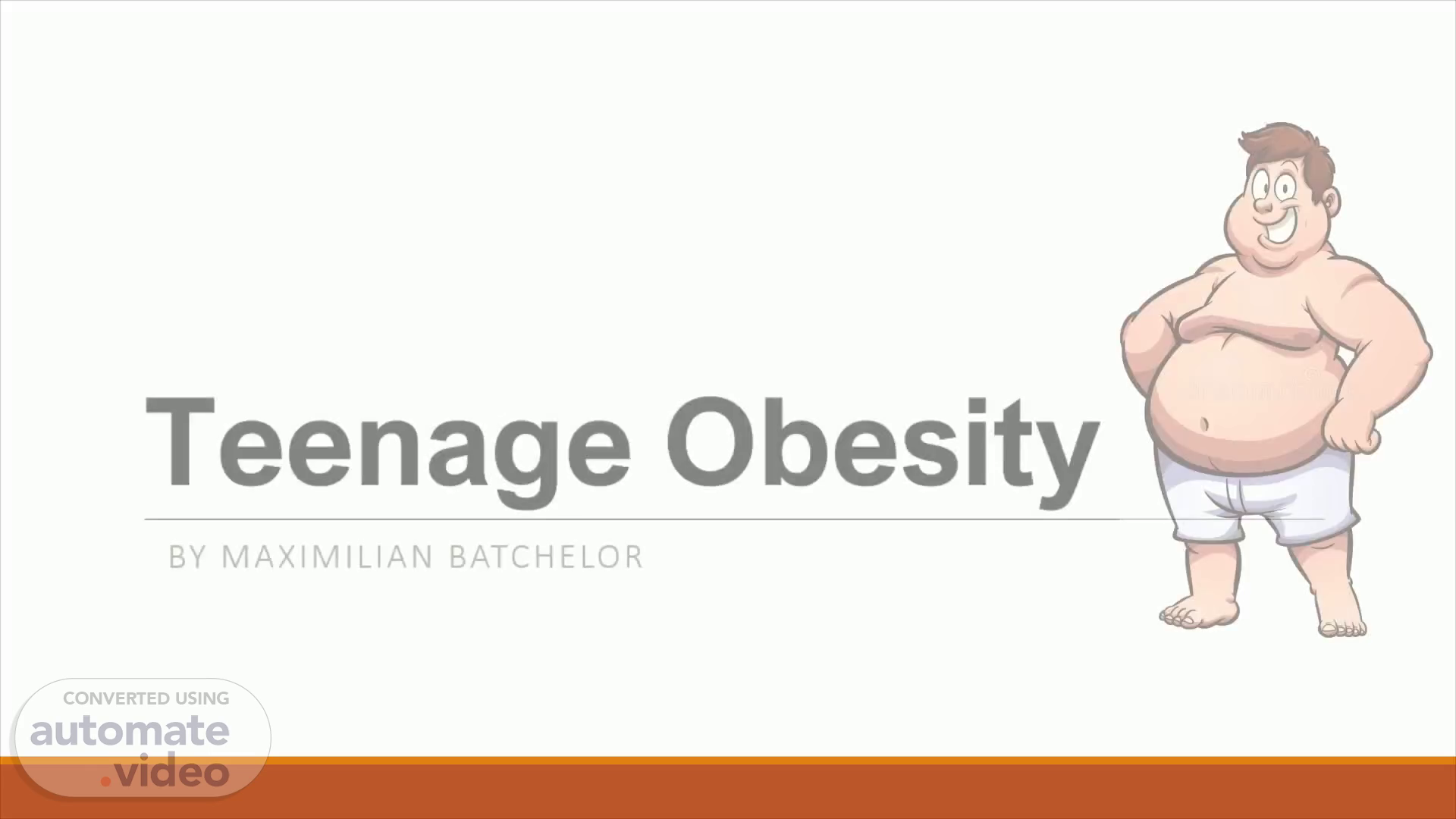Page 1 (0s)
[Audio] Hey! In today's video, we discuss the topic of teenage obesity along with its causes, risks and consequences.
Page 2 (11s)
[Audio] First, we must understand what teenage obesity means. Obesity is when a teenager has too much body fat. A person can tell if he or she is obese by calculating their BMI ( Body Mass Index). If a BMI score is under 30, the person is not obese.
Page 3 (30s)
[Audio] Obesity results in a variety of health issues. These consequences include risk of stroke due to higher cholesterol and blood pressure, Type 2 diabetes and sleeping problems such as asthma and sleep aponia. Obesity can also cause emotional damage such as lower self-esteem, as a result of being bullied for one's appearance.
Page 4 (50s)
[Audio] Obesity in teenagers is caused primarily by overeating sugary, high fat and refined foods. This unhealthy behavior may be caused by cultural or poor early life influences, by TV ads, family members or friends. Having a lazy and inactive lifestyle increases the risk of obesity, especially in overweight teenagers.
Page 5 (1m 12s)
[Audio] 650 million people out of the current world population of 7.8 billion people, are obese. One out of every 6 teenagers struggle with obesity. Shockingly, the worldwide obesity rate has tripled since 1975.
Page 6 (1m 29s)
[Audio] Teenage obesity is treated differently around the world. This is due to cultural, societal and even religious differences. Having different diets in their religion and culture. Take, for example, the difference of obesity rates between the United States and Japan. Incredibly, 32% of the USA population are or have been diagnosed with obesity, which compares to Japans jaw dropping 3.6%. This difference is due to the foods found in each country's diets. The US consumes a high number of processed foods, while Japan consumes more natural, non-processed foods.
Page 7 (2m 9s)
[Audio] For years, people have been trying to prevent teenage obesity. It is a medical fact that young people who get at least 30 minutes of physical activity daily are more fit than those who do not. Schools, governments and families are now all encouraging young people to adapt to some sort of exercise. The amount of screen time teenagers have is also a key factor contributing to laziness and inactivity. Screen time wastes time and drains the ambition of becoming more physically fit.
Page 8 (2m 38s)
[Audio] Did you know that more than one in four 17– 24-year Olds in the United States is now too heavy to serve in the military. Children with parents who suffer from obesity are 12 times more likely to be overweight and obese.
Page 9 (2m 52s)
[Audio] With the rise of social media, it has never been easier to state ones opinion and share it across the world. This freedom of speech, however, has its downsides. Reading negative comments on social media about ones appearance can have dramatic effects on body image and leave one feeling anxious, embarrassed or self-conscious. The so-called body standard makes for unrealistic and excessive pressure on those who do not fit the standard. This insecurity of personal body image has led to online body shaming. Subsequently obese adults and obese teenagers are confronted and overwhelmed by cyber bullying.
Page 10 (3m 29s)
[Audio] For obese teenagers the risks of developing eating disorders are very high. Binge-Eating Disorder ( BED) and Night-Eating Syndrome ( NES) are two forms of eating disorders associated with obesity.
Page 11 (3m 42s)
[Audio] Thanks for listening! type. A picture containing clipart, vector graphics Description automatically generated.
